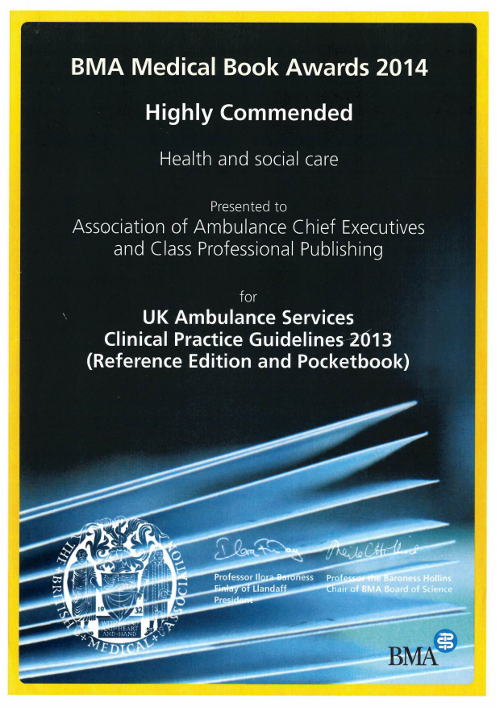Real standards for clinical care
Providing standards for the clinical care that is delivered to patients in the prehospital setting is very challenging. The environment of care can be different for every patient and every incident attended. As all responders will know, Protocols, which are by nature proscriptive and limiting, are not always suitable for use ‘on the ground’. They are rigid statements that allow little of the flexibility that is required to deliver optimum care, in the right place, at the right time.
Guidelines, however, are recognised to reduce unacceptable or undesirable variations in practice and provide a robust basis for providers to deliver the best care. They are tools designed to assist decision-making and allow patient needs to be considered as part of practice.
Since the 1990s, the Joint Royal Colleges Ambulance Liaison Committee (JRCALC) has produced guidance for ambulance clinicians. Through rapid developments in capabilities, especially the expansion of Paramedic’s scope of practice, these early publications have been radically developed to become our current set of guidance, the UK Ambulance Services Clinical Practice Guidelines 2013. Provided in a variety of formats, two publications complement each other – the full reference edition is supported by a ‘Pocket Book’ field guide. In addition to the printed books, digital editions are available to purchase for download onto iOS (iPad, iPod, iPhone) and Android devices.
Gold standard
 Now into its third reprint, these guidelines are considered the gold standard across the UK by the NHS ambulance services and a wide variety of other organisations and care providers. AACE and Class Professional Publishing were delighted that both books were shortlisted and then ‘highly commended’ at the BMA Medical Book Awards in 2014.
Now into its third reprint, these guidelines are considered the gold standard across the UK by the NHS ambulance services and a wide variety of other organisations and care providers. AACE and Class Professional Publishing were delighted that both books were shortlisted and then ‘highly commended’ at the BMA Medical Book Awards in 2014.
The challenge through 2015 is for AACE to support, through JRCALC, expert groups to research, evidence and write new guidance where required. Work has started on:
Convulsions in Children; Sepsis; Mental Health and End of Life Care as well as updating C-Spine Care and Immobilisation along with the Head Trauma sections.
In response to the increasing number of lower acuity patients seen by UK ambulance services a new section is being developed to offer guidance in meeting the clinical needs of this patient group.
Mark Millins, Lead Paramedic for Clinical Development at Yorkshire Ambulance Service NHS Trust, is assisting AACE with coordinating this task. He said;
“I am delighted to have recruited Paramedics on to each group who have the credentials and enthusiasm to produce high quality guidance based on current evidence. Under the direction of JRCALC chairmanship, each group will produce recommend draft text to go forward to NASMED for inclusion in the 2016 publication.”
Updates available separately
AACE is committed to publishing the revisions and the new guidelines in the first quarter of 2016. There will be many care providers and students who will want to have the new version available to them in either print or electronic format but to assist those who own the 2013 edition and only require the updates, Class Professional and AACE are looking into providing standalone updates published separately in addition to a fully updated Pocket Book. The intellectual property rights (IPR) and copyright for these guidelines are held by AACE who are mindful to maintain their currency. All NHS ambulance trusts invested in their development and there is an obligation to ensure that investment is well managed. Because of that, the guidelines are not made freely available on the web but licensed versions can be made available to individuals or academic institutions for students to reference and use for their studies.
To support continuing professional development (CPD) for clinical staff, AACE were pleased to give access to the 2013 Guidelines for Richard Berry to support his online learning tool CPG:CPD, which can be tried out for free here. As Richard says;
“CPG: CPD dovetails with that need to complement academic methods with a prehospital brain-training tool. It is suitable for those starting their career, those consolidating, and those in their middle and later years facing difficulties in the recall of information they used to find so easy!”
Clinical Guideline Apps…
Looking forward to 2016 and beyond, technology and innovation will no doubt influence practice and the way we access and record information. AACE is keen that clinical guidance and aids to learning continue to be produced in formats best suited to the user and to promoting improved patient care. Expect news on the suite of Clinical Guideline Apps and the like in the near future.
[This article was first published in Emergency Service Times April 2015]
